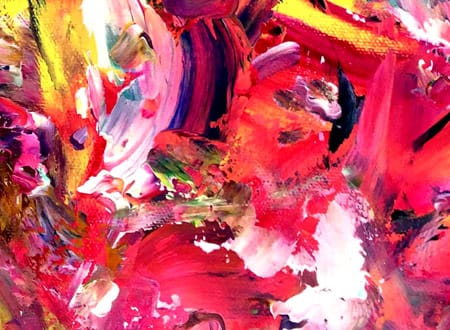Exploring Abstractionism by Asmodelle.
The basic premise of abstraction – incidentally, a key issue of aesthetics – is that the formal qualities of a painting (or sculpture) are just as important (if not more so) than its representational qualities. In exploring Abstractionism, let’s start with a very simple illustration. A picture may contain a very bad drawing of a man, but if its colours are very beautiful, it may nevertheless strike us as being a beautiful picture. This shows how a formal quality (colour) can override a representational one (drawing). In exploring Abstractionism, on the other hand, a photorealist painting of a terraced house may demonstrate exquisite representationalism, but the subject matter, colour scheme and general composition may be totally boring.
Abstractionism, as an artistic movement and a creative approach, offers a unique platform for artists to communicate thoughts, emotions, and experiences without the constraints of representational forms. By shifting focus from the observable world to the internal landscapes of human emotion and subjective perception, abstractionism invites artists to push the boundaries of their creative expression and explore new aesthetic territories.
Abstractionism begins with a rejection of traditional artistic conventions. Artists seeking to embrace abstraction must first let go of the compulsion to replicate the physical world, and instead learn to communicate through the language of shapes, colors, and lines. In this sense, abstractionism is not just a stylistic choice but a fundamental reorientation of the artist’s relationship with their medium and their audience.
One of the key challenges, and indeed, opportunities, for artists delving into abstractionism is mastering the language of abstract forms. Unlike representational art, where symbols and images have well-established meanings, the language of abstraction is far more open-ended and subjective. The lines, colors, and shapes used by the abstract artist are imbued with meaning not through shared cultural or societal references, but through the unique interplay of elements within the artwork and the artist’s intention.
Exploring abstractionism often involves a deep investigation into the fundamental elements of visual art. Color, for instance, becomes more than a tool for rendering objects faithfully or creating realistic light effects; it becomes an expressive element in its own right, capable of evoking mood, creating depth, or even acting as the primary subject of a work, as seen in Mark Rothko’s Color Field paintings.
Similarly, form and line in abstract art are freed from their traditional roles in delineating objects and defining perspective. Instead, they can be used to create rhythm, establish visual relationships, or express movement and energy, as demonstrated in the dynamic compositions of Wassily Kandinsky and Franz Kline.
In abstractionism, the process of creation itself takes on a heightened significance. The act of painting, sculpting, or assembling an artwork is seen as an expressive performance that leaves its mark on the final piece. This focus on the process encourages artists to engage with their materials more intuitively and spontaneously, fostering a direct, authentic expression of their creative impulse.
Moreover, the abstract artist must also navigate the delicate balance between intention and interpretation. While their work may be deeply personal and rooted in their unique emotional and perceptual experiences, the abstract nature of the work leaves it open to a broad range of interpretations. Learning to embrace this ambiguity and to create art that encourages active engagement and personal interpretation by the viewer is a fundamental part of the abstractionist journey.
In conclusion, exploring abstractionism offers artists a unique opportunity to expand their creative horizons, to redefine their relationship with their medium and audience, and to express their innermost thoughts and feelings in a profoundly personal yet universally accessible language. By pushing the boundaries of form, color, and composition, and by embracing the open-endedness and subjectivity inherent in abstract art, artists can uncover new depths and dimensions in their creative practice.


